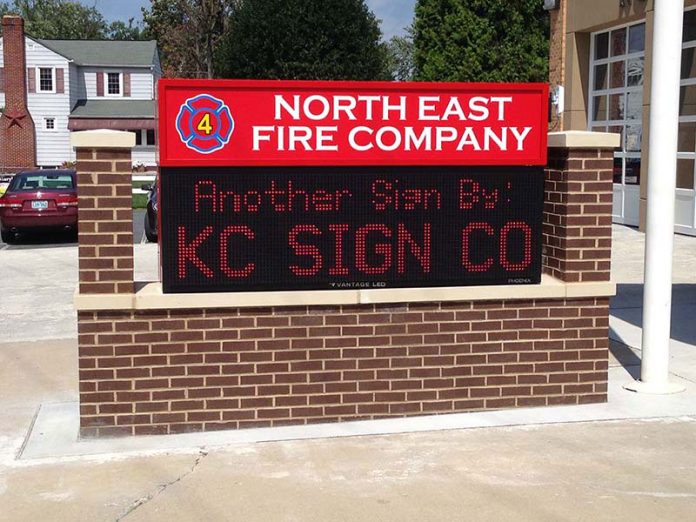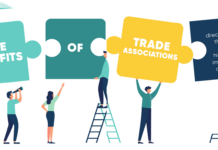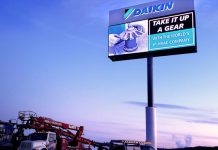By Ashley Bray
Family-owned, full-service sign company KC Sign & Awnings located in Aston, Pennsylvania has been servicing the Delaware Valley region for almost 30 years. The sign company offers everything from awnings to vehicle wraps to ADA signs, but it’s entry into digital signage was a little more recent.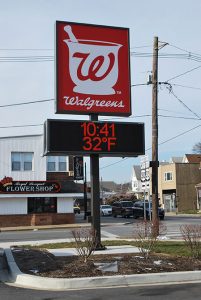
KC Sign & Awnings entered the digital sign market in the late aughts after it observed prices coming down and digital signage making inroads into more markets. “We were probably early compared to most sign shops that got in, but we saw the new wave coming and people were going to go that way,” says Steve Clark, director of Sales, KC Sign & Awnings.
The sign company offers both indoor and outdoor digital signage through Vantage LED that comes with a multi-year content creation package and a seven-year warranty. KC Sign & Awnings also partners with some third parties to offer financing on the signs to its customers.
While outdoor digital signage is pretty well known and established, Clark sees demand for indoor digital signage starting to grow beyond the super high-resolution displays in the casino, city, and stadium markets. He predicts indoor digital signage soon making bigger moves into the commercial and public sector in businesses like restaurants.
Currently, KC Sign & Awnings provides digital signage for a number of markets, including country clubs, bars, and auto dealers. On the public sector side, the sign company does projects for fire companies, school districts, and townships.
Clark says installing outdoor and indoor digital signage both has its perks and drawbacks. With outdoor digital signage, Clark says sign companies are working with mediums and processes they know well—such as a putting a display on a pole for a pylon sign, or digging a footing.
Interior digital signage, on the other hand, can present new challenges with wiring and finding ways to run power through buildings that can be very old. However, indoor digital signage does eliminate the variable of weather delays on an install.
Speaking of challenges, Clark says one of the biggest hurdles KC Sign & Awnings faces in selling digital signage is educating its customer base. Clark says the difference between resolution and brightness has come up a lot lately. “It gets tricky with brightness levels because everyone is now accustomed to comparing resolutions, and the client base has gotten used to knowing the difference between something that’s 6mm 12mm, or 20mm. The tricky part is there’s a lot of people out there offering higher resolution boards, but they don’t put out the same brightness and that’s almost as big of a factor as resolution when it comes to outdoor signage,” says Clark, who explains that the discussion used to revolve around pixel, resolution, and pixel matrix, and it is now about pixel, resolution, pixel matrix, brightness, and durability.
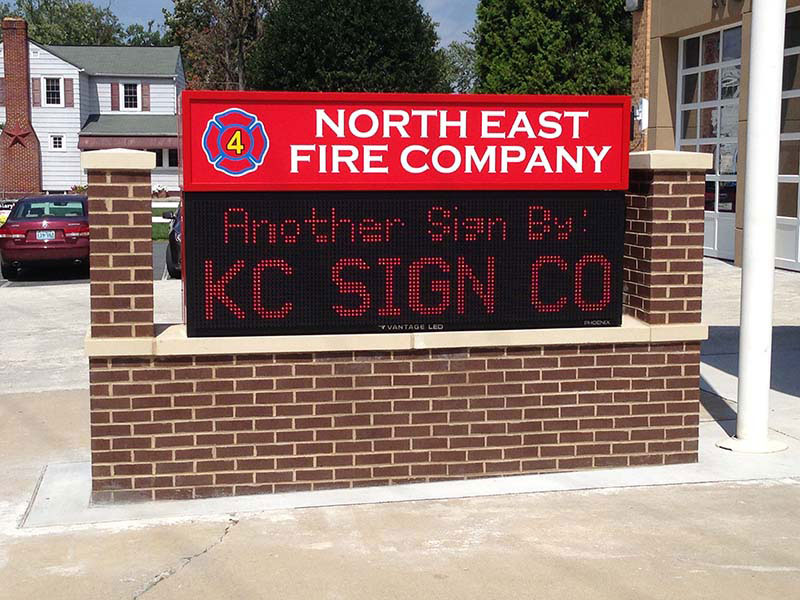
Another challenge that will be familiar to any sign maker is the permitting process. “Permitting is always an issue. A lot of townships are still behind in their code, so we spend a good bit of time going through variances to get things approved because the government works slow. A lot of the code that was written was to prevent people from putting big billboards on a two lane highway; they weren’t to prevent a business putting a two-by-eight sign out,” says Clark, who says many of the codes are just a blanket ordinance saying no LED signs allowed. “It’s getting better as time goes on, but a lot of townships still won’t change the code. They’ll make you go through a long, drawn-out process, pay extra money, and then they’ll approve it.
“Know what the code is before you waste your time selling an LED to someone,” continues Clark. “Permitting is the only thing that usually prevents a job from being sold or completed—when you get a township that won’t budge.”
For other sign shops considering the digital signage market, Clark recommends to first and foremost choose your LED display partner wisely. “It’s probably the biggest thing that holds sign shops back—the horror stories or the bad experiences they have from picking an LED product or vendor that doesn’t stand behind their product or isn’t quality. I mean, they are high ticket items, so if you put something out there that doesn’t work, can’t get fixed, or you can’t service, it’s the quickest way to see your Google ratings dip or business disappear,” says Clark.
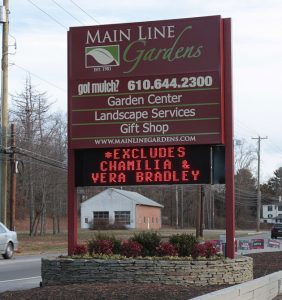 He also recommends choosing a partner that will be able to provide parts and support on repairs. “We typically only have to make one trip to fix a sign because we stock extra of pretty much everything,” says Clark. “We can go out and fix it with parts we keep stocked then ship back the bad ones and replenish our stock.”
He also recommends choosing a partner that will be able to provide parts and support on repairs. “We typically only have to make one trip to fix a sign because we stock extra of pretty much everything,” says Clark. “We can go out and fix it with parts we keep stocked then ship back the bad ones and replenish our stock.”
Above all, Clark recommends sign companies seriously consider adding digital signage to their line-up as it will keep them competitive and draw in additional business.
“The more digital presence we have, the more it draws us to other business. Because if someone is going to trust us with a $30, $50, or $100,000 dollar project, they’re definitely going to call us for a $3,000 dollar awning. So it qualifies you that you can handle it,” says Clark. “It has definitely led to a lot of other business.”


